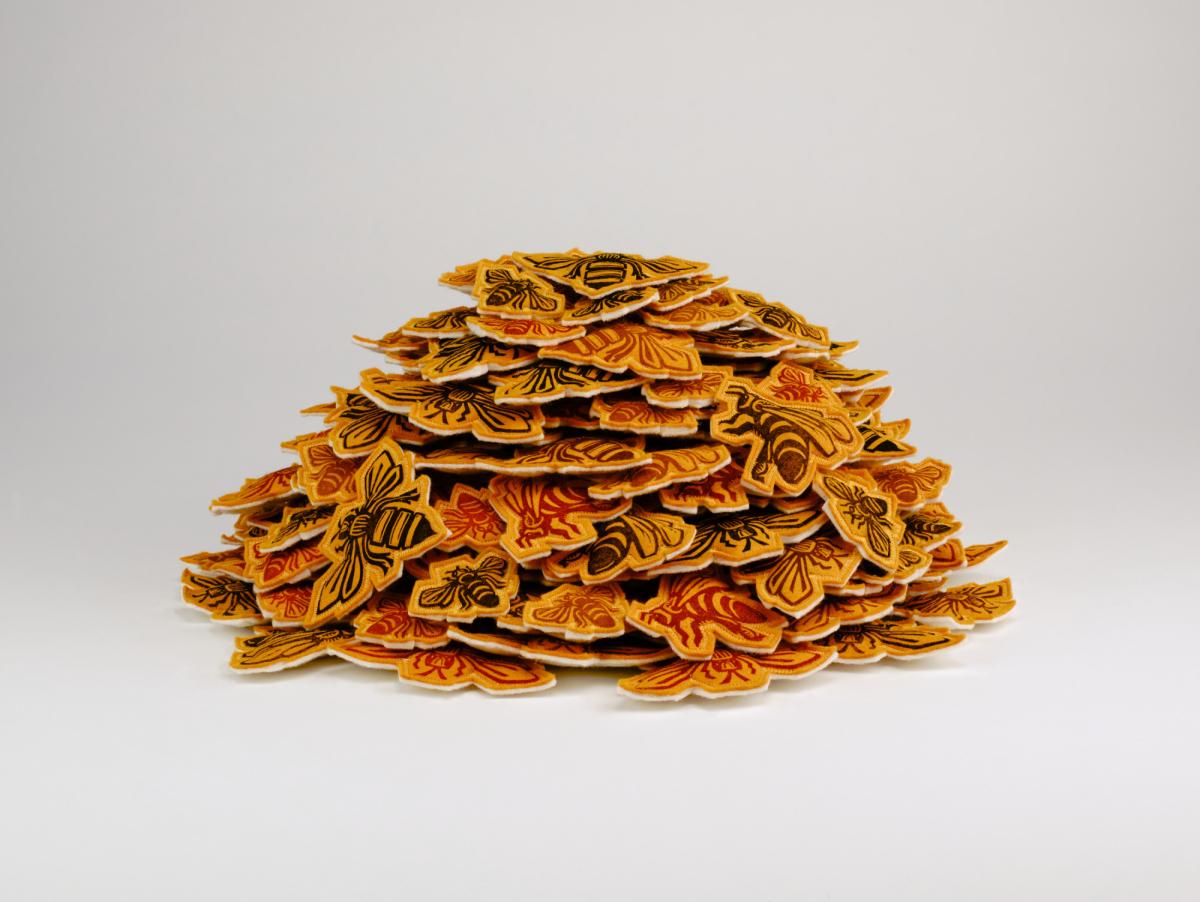
SAAM’s landmark exhibition, ¡Printing the Revolution! The Rise and Impact of Chicano Graphics, 1965 to Now, explores how Chicanx artists have linked innovative printmaking practices with social justice. This blog post is part of series that takes a closer look at selected artworks with material drawn from exhibition texts and the catalogue.
¡Printing the Revolution! The Rise and Impact of Chicano Graphics, 1965 to Now takes the discussion of Chicanx graphic arts in new directions. In using the terms graphics and graphic arts as opposed to posters, the exhibition and catalogue acknowledge that Chicanx artists embrace a wide range of printmaking techniques and formats, from lithography to linocut and installation art, public interventions, and the broad field of expanded graphics, which includes works that extend beyond using paper.
Sonia Romero’s Bee Pile combines the elements of block printmaking, installation, and public art. The work includes more than 200 bees printed and hand-sewn by the artist to draw attention to colony collapse disorder, the unexplained disappearance of the honeybee that pollinates crops. By challenging the term graphics, Chicanx artists also explore a broader array of visual culture that is not usually the focus of art museum exhibitions and collections. This overlap between art and visual culture remains a tendency within the history of Chicanx activist artists and emerges from the immediate need to reach audiences in varied contexts around pressing causes such as land issues and farmworkers' rights, among others. Originally displayed in a grocery store as a site-specific installation designed to bring art out of the museum setting and into the community, this project is part of a series that critiques over-consumption and disproportionate waste production.




















